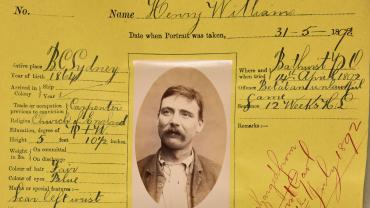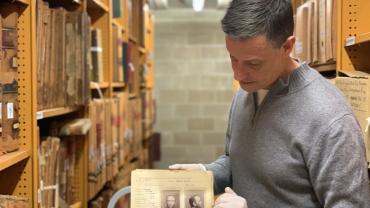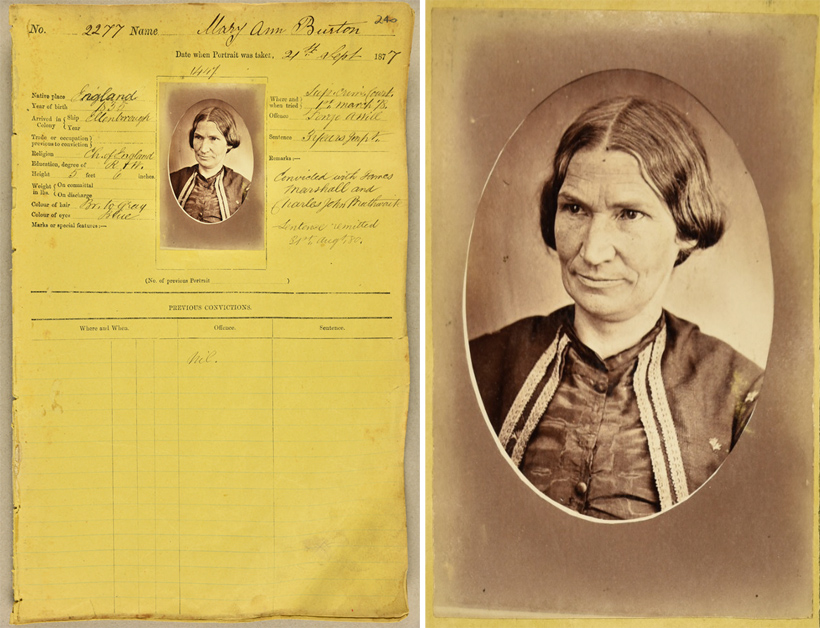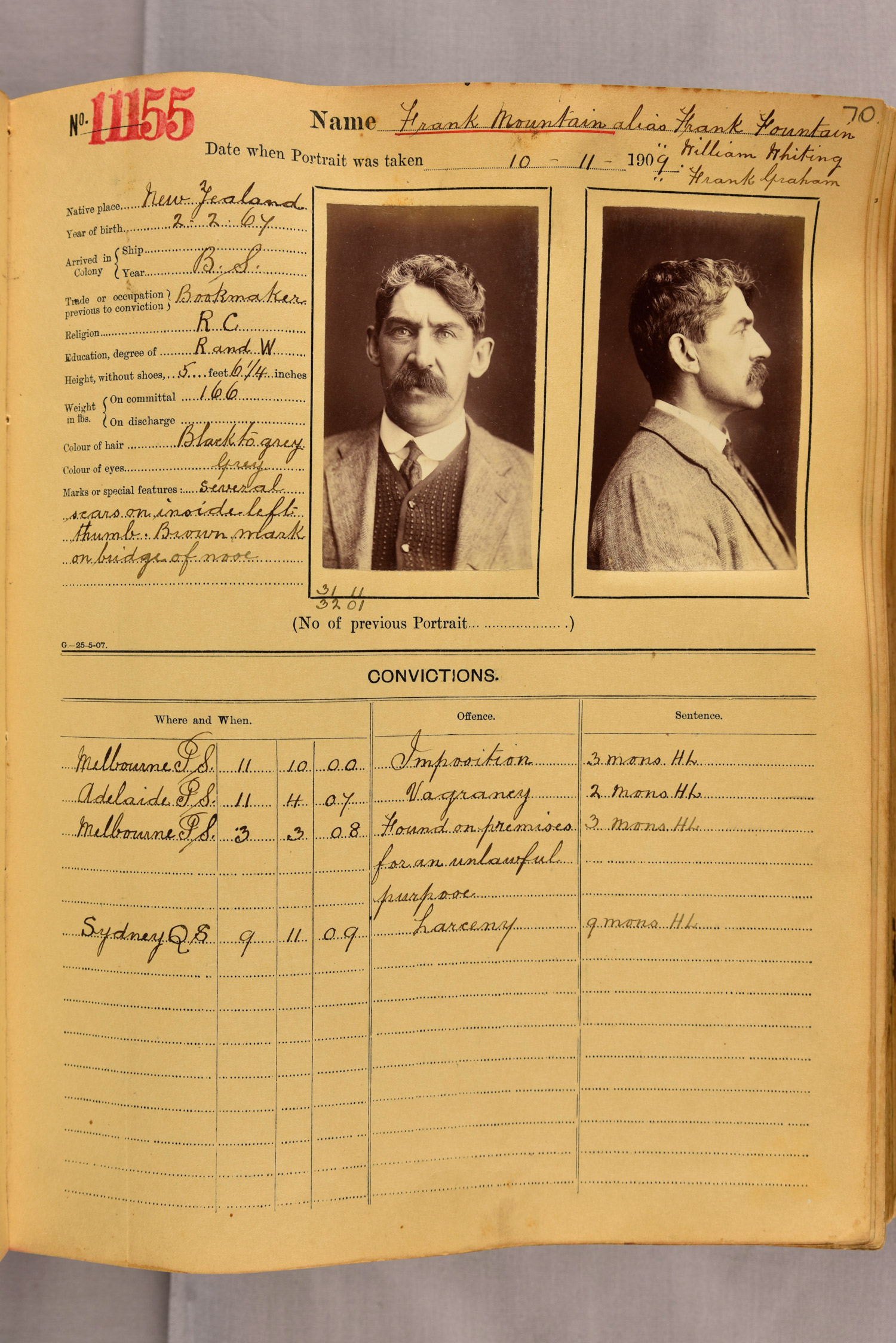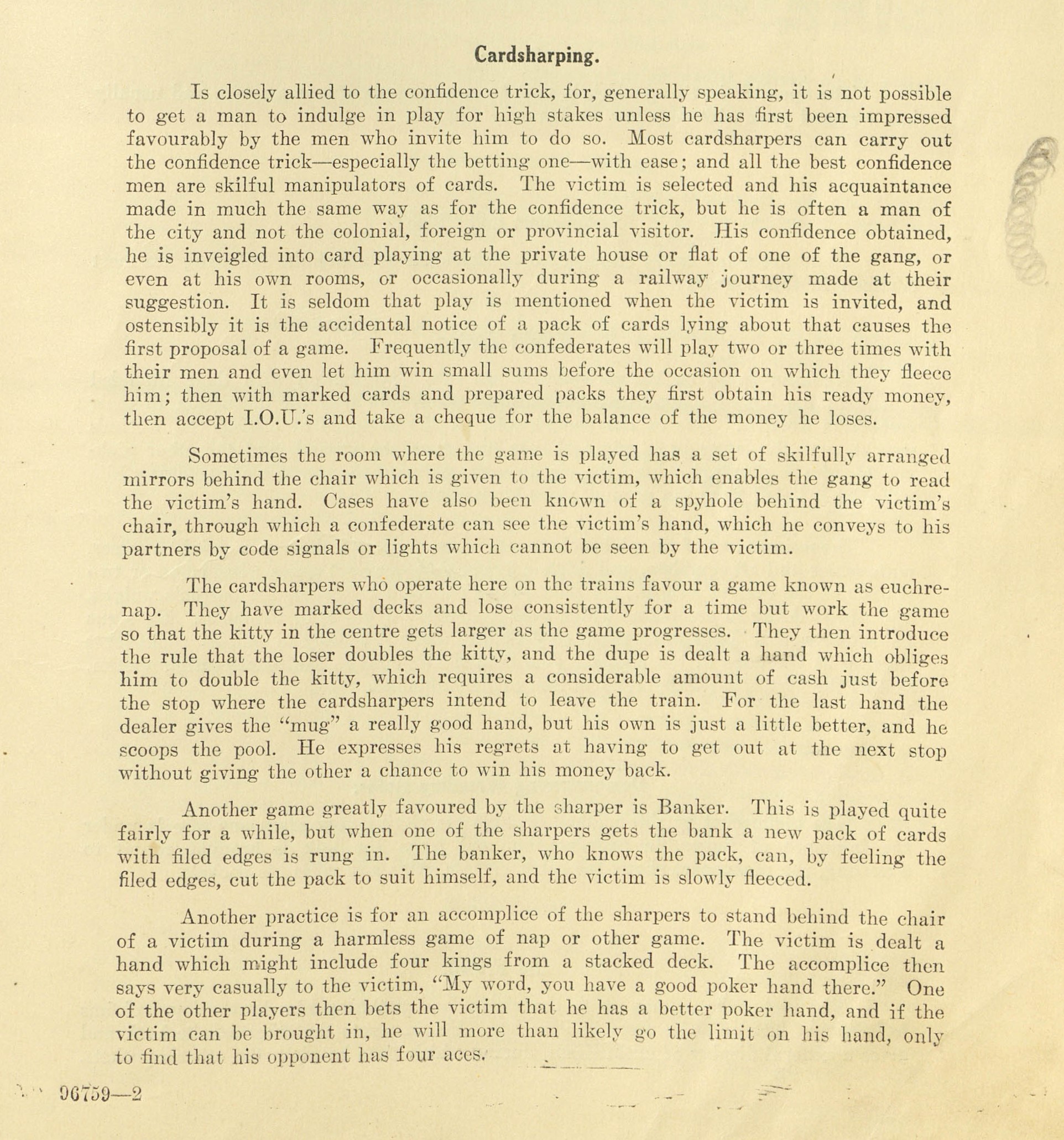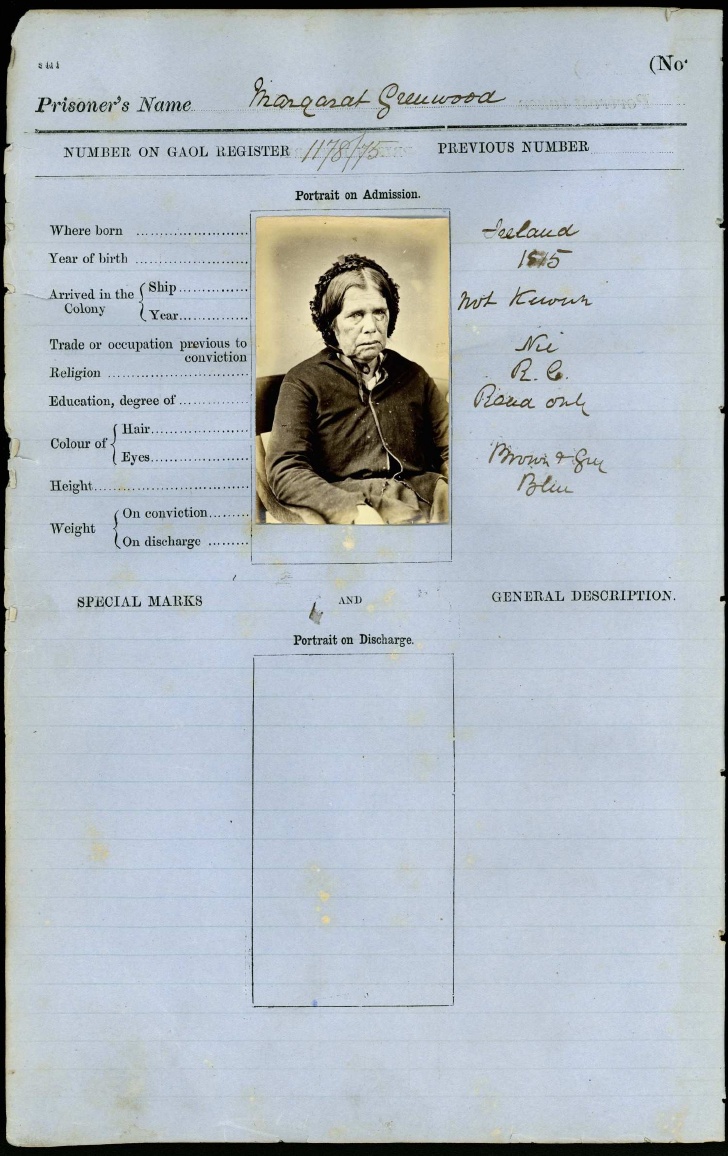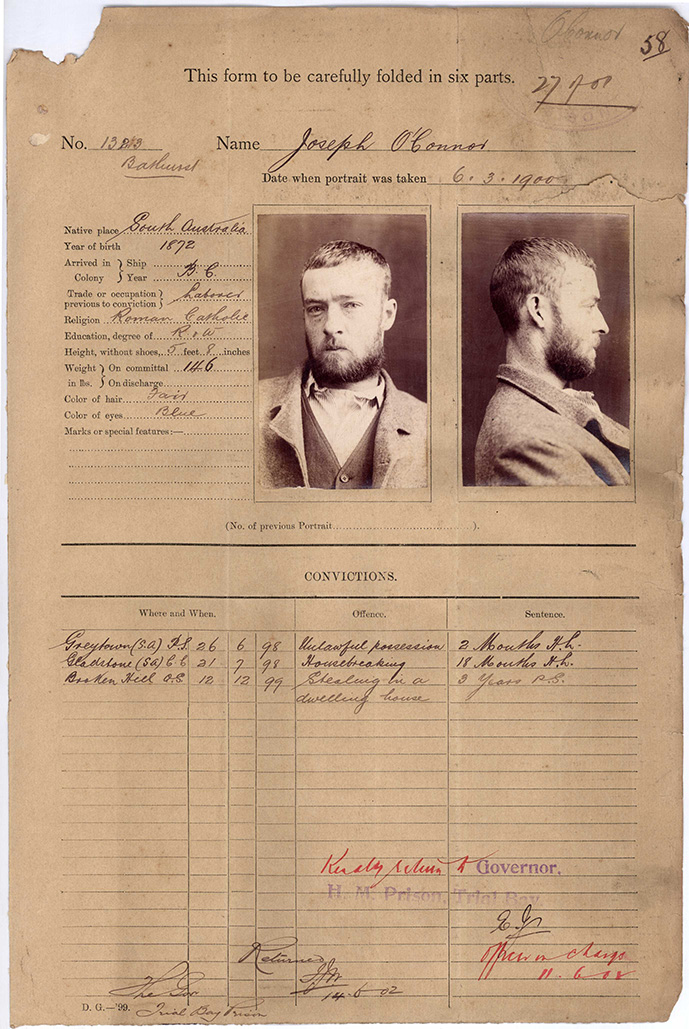Regulatory background
Provost Marshall
The position of Provost Marshall was established in New South Wales as part of the original civil establishment. The Provost Marshal carried out all the orders and judgements of the Court of Criminal Jurisdiction and the Civil Court. In criminal proceedings the Provost Marshal 'received the bodies of all offenders to hold in safe custody till trial', and was required to be present at all sittings of the Court. He, or his deputies executed sentences of death or other punishments.
The Sheriff
In 1823 the Sheriff replaced the office of Provost Marshall. The duties of the Sheriff included: executing all the judgments, decrees, and orders of the Supreme Court; in criminal cases, 'keeping the body of the accused until trial' and producing him/her in Court; carrying out the death sentence and any minor sentence the court might pass; attendance at all executions throughout the colony; arranging for the transmission and return of prisoners; organisation of the iron'd gangs working on Goat Island and on the streets of Sydney; and control of gaols.
Department of Prisons
From 1874 prisons were placed under the control of the Comptroller of Prisons. The Prisons Act of 1899 (Act No. 16, 1899) consolidated the existing Acts concerning the regulation and control of prisons and the custody of prisoners.
Department of Corrective Services
In 1970 the title of Department of Prisons was changed to Department of Corrective Services. In 1995 the Department stated that its official duty was to serve the people of New South Wales by carrying out orders of the courts in maintaining inmates in custody, or under supervision until they are lawfully released.
See more about the Department of Prisons / Corrective Services in our catalogue »
How do you know if someone was a gaol inmate?
Court records
Court records, court depositions and related documents provide details of people convicted in New South Wales. Some records show the sentence and may show the name of the gaol. The various court jurisdictions can be found in our catalogue.
Police gazettes
Police Gazettes, published from 1862 onwards can show details such as crimes committed, criminals wanted, criminals apprehended, prisoners discharged, and persons on good behaviour bonds. Police Gazettes are indexed and are available on microfilm between 1862 and 1900 in the reading room.
Death certificates
A death certificate may show that someone died in gaol.
Indexes to death certificates, 1788-1945, are available on microfiche in the reading room and the NSW Registry of Births, Deaths and Marriages website.
Newspapers
There may be a report in a newspaper about someone going to gaol. We don't hold copies of newspapers. Contact the State Library of NSW or public libraries in the area.
Population records
Muster and census records prior to 1837 may show if an individual was a gaol inmate or in a penal settlement. See the Census / Musters Guide for details about NSW muster and census records.
Typical records of gaol inmates
Entrance book
This record shows entrance number of prisoner, date of entrance and conviction, name, offence, sentence, magistrate, age, religion, place of birth and ship of arrival, previous and subsequent entrance number and final disposal.
Description book
This record contains gaol number, name of prisoner, ship, where born, religion, trade, age, height, complexion, colour of hair and eyes, education (read and/or write) and physical peculiarities.
Entrance and description book
This series gives particulars of prisoners entering gaol including date, gaol number, name, address, committed (by whom, when and where), offence, sentence, where born, ship and year of arrival in the colony, religion, trade, age, height, colour of hair and eyes, education (read and/or write), remarks (physical peculiarities and disposal). From early in the 20th century details of assistance by the Prisoners Aid Association are noted. More recently, these books also record whether or not the person was Aboriginal.
Photograph description book
These records contain a photograph of each prisoner and the following details: number, name, aliases, date when portrait was taken, native place, year of birth, arrived in colony (ship and year), trade or occupation, religion, degree of education, height, weight (on committal, on discharge), colour of hair, colour of eyes, marks or special features, where and when tried, offence, sentence, remarks, and previous convictions (where and when, offence, sentence).
The series was created in accordance with the 'Gaol Regulation' proclaimed in the NSW Government Gazette of 19 February, 1867. While the series roughly covers the period 1870-1930, the dates of the books for each gaol vary.
The gaol photograph description books are indexed. The index is online.
Discharge books
Early volumes in this series note gaol number, ship and year of arrival, name of prisoner, offence, sentence, where and when convicted and details of discharge. Later volumes consist of duplicate and triplicate copies and record name, birth date, sentence and type of discharge.
Gaoler's journal
This series provides a daily record of the state of the gaol, and the security and conduct of the prisoners.
Records in the State archives
Below is a list of all the gaols for which we hold material. Consult our catalogue under Agency No 1, Corrective Services or search by name of the gaol for further information.
Note: records of gaol inmates may be incomplete.
| Name of Gaol | Name of Gaol |
|---|---|
|
Albury Gaol Armidale Gaol Balranald Gaol Bathurst Gaol Bathurst Internment Camp Bega Gaol Berrima Gaol Biloela Gaol Bombala Afforestation Camp Bombala Gaol Braidwood Gaol Broken Hill — Old Police Gaol (also Silverton Gaol) Broken Hill — New Gaol Brookfield Afforestation Camp, Mannus Brookfield Afforestation Camp, Mila Burrowa Gaol Campbelltown Gaol Carters Barracks — Debtors Prison Cessnock Corrective Centre Cockatoo Island Penal Establishment Condobolin Gaol Cooma Gaol Coonabarrabran Gaol Cootamundra Gaol Darlinghurst Gaol Deniliquin Gaol Dubbo Gaol Emu Plains Training Centre Glenn Innes Afforestation Camp (Mount Mitchell Afforestation Camp) Goulburn Gaol Grafton Gaol Grenfell Gaol 'Harmony Hulk' Hay Gaol Katingal Special Unit |
Kempsey Gaol Kirkconnell Afforestation Camp Leslie Nott Afforestation Camp, Laurel Hill Long Bay Gaol (State Penitentiary Long Bay) Maitland Gaol Metropolitan Reception Prison Metropolitan Remand Centre Mudgee Gaol Mulawa Training and Detention Centre, Silverwater Narrabri Gaol Newcastle Gaol Parramatta Gaol 'Phoenix Hulk' Port Macquarie Gaol Queanbeyan Gaol Shaftesbury Girls Reformatory, South Head Shaftesbury Institution Silverton Gaol Silverwater Work Release Centre State Penitentiary Long Bay State Reformatory for Women, Long Bay Sydney Gaol Tamworth Gaol Taree Gaol Tomago Women's Detention Centre Trial Bay Prison Tuncurry Afforestation Centre Wagga Wagga Gaol Wentworth Gaol Windsor Gaol Wollongong Gaol Wyalong Gaol Yarrongobilly Gaol Yass Gaol Young Gaol |
Access
Records over 70 years old
The Department of Corrective Services made access directions to cover records over 30 years of age. Access directions either open records to public access or close them for a longer period to protect sensitive information.
Under Access Direction 303, records of individual offenders (inmates) and Corrective Services staff are open to public access after 70 years. The access direction covers the records of predecessor agencies to the Department such as the Department of Prisons.
Records less than 70 years old
1. Obtain permission from the Department of Communities and Justice
To access records closed to public access, that is records less than 70 years old, you will need written permission from the Department of Communities and Justice. Remember any letter from the Department should authorise access to the person who intends to inspect the records in our reading room.
See details and contacts for NSW Department of Justice, Office of the General Counsel.
Please see the Corrective Services NSW website for information about the kinds of records they hold.
2. Visit our Reading Room
Once you have written authorisation to access the records you will need to:
- contact us before visiting the reading room, and
- produce the letter of authorisation before accessing the records
Please refer to Your Rights of Access for further information relating to accessing the State archives.
ARCHIVES IN BRIEF
Content in this guide first appeared in Archives in Brief 82 - Records of gaol inmates
What's happened with Archives in Brief »


